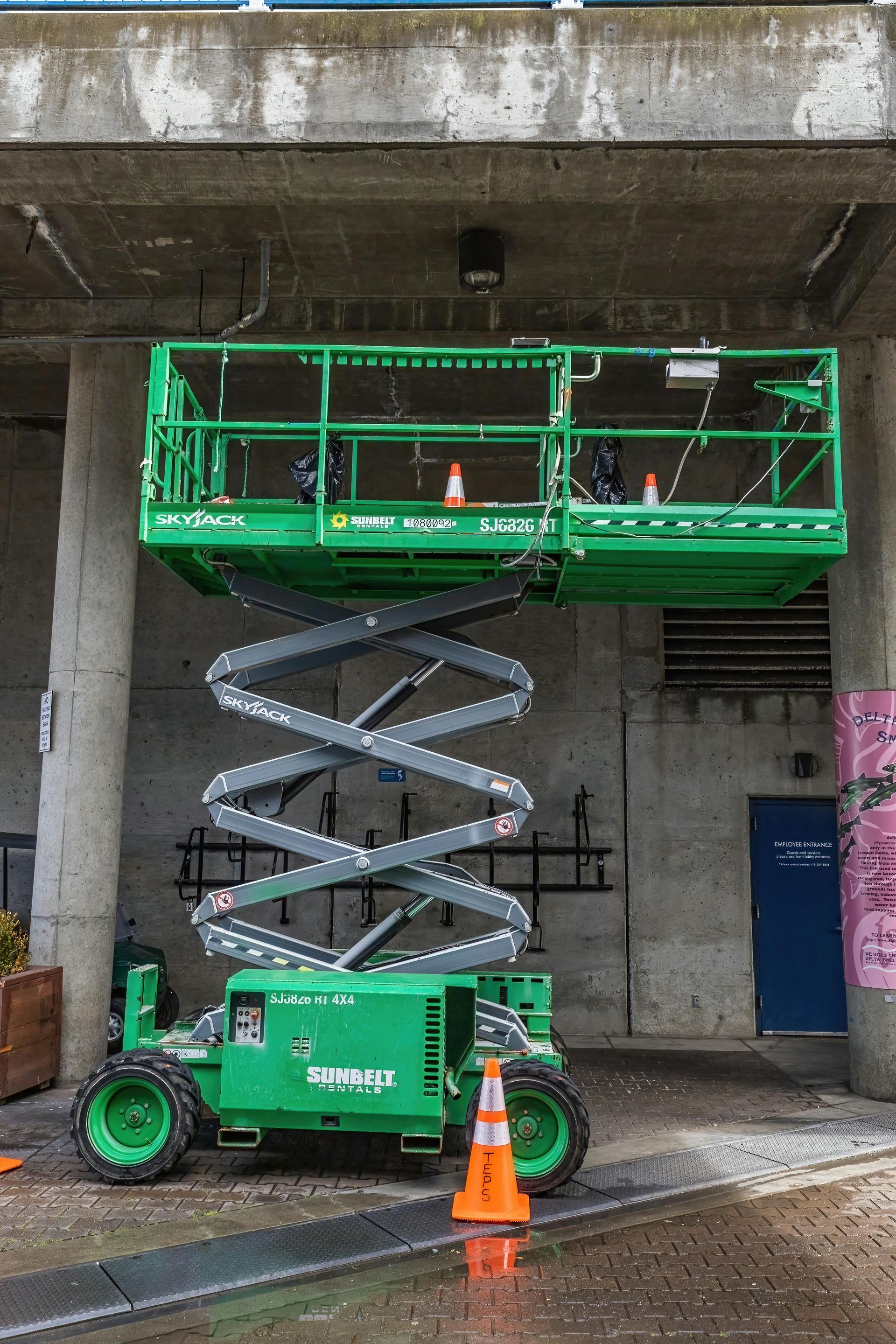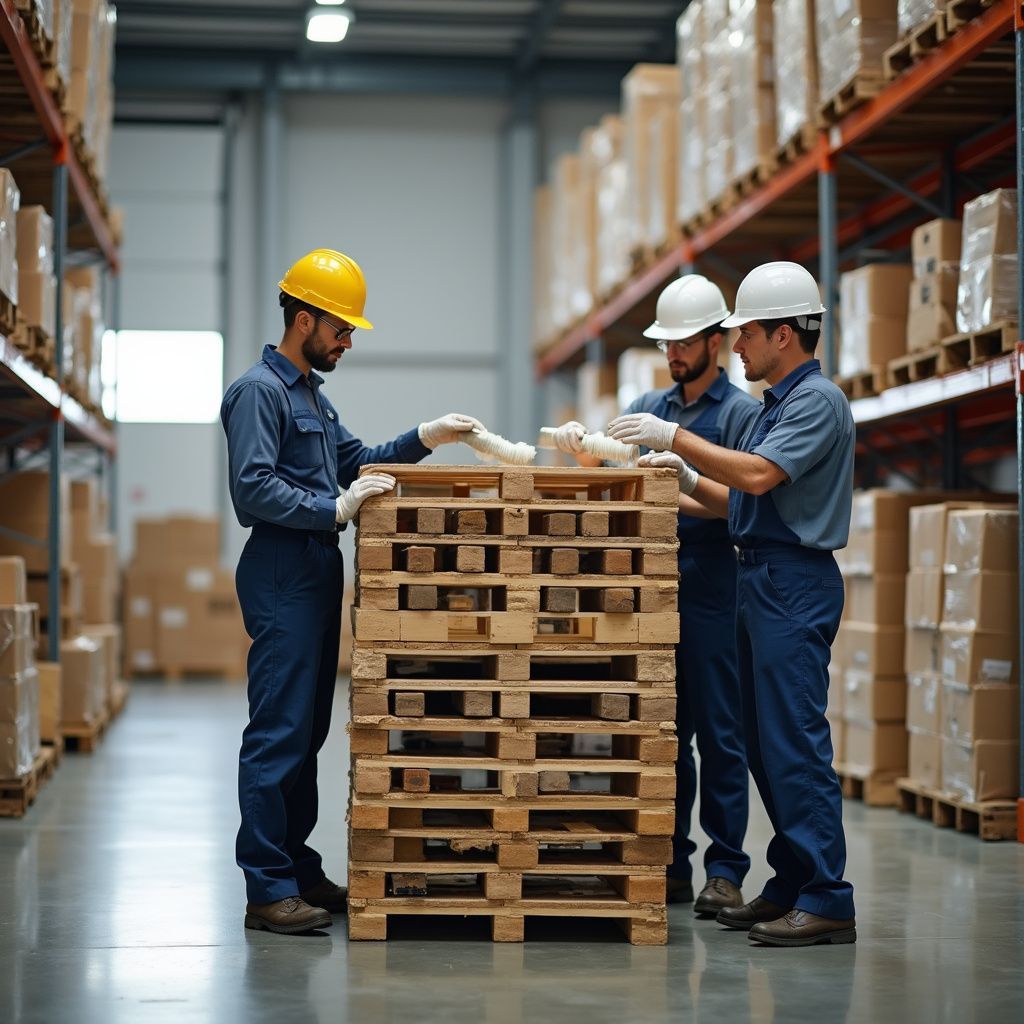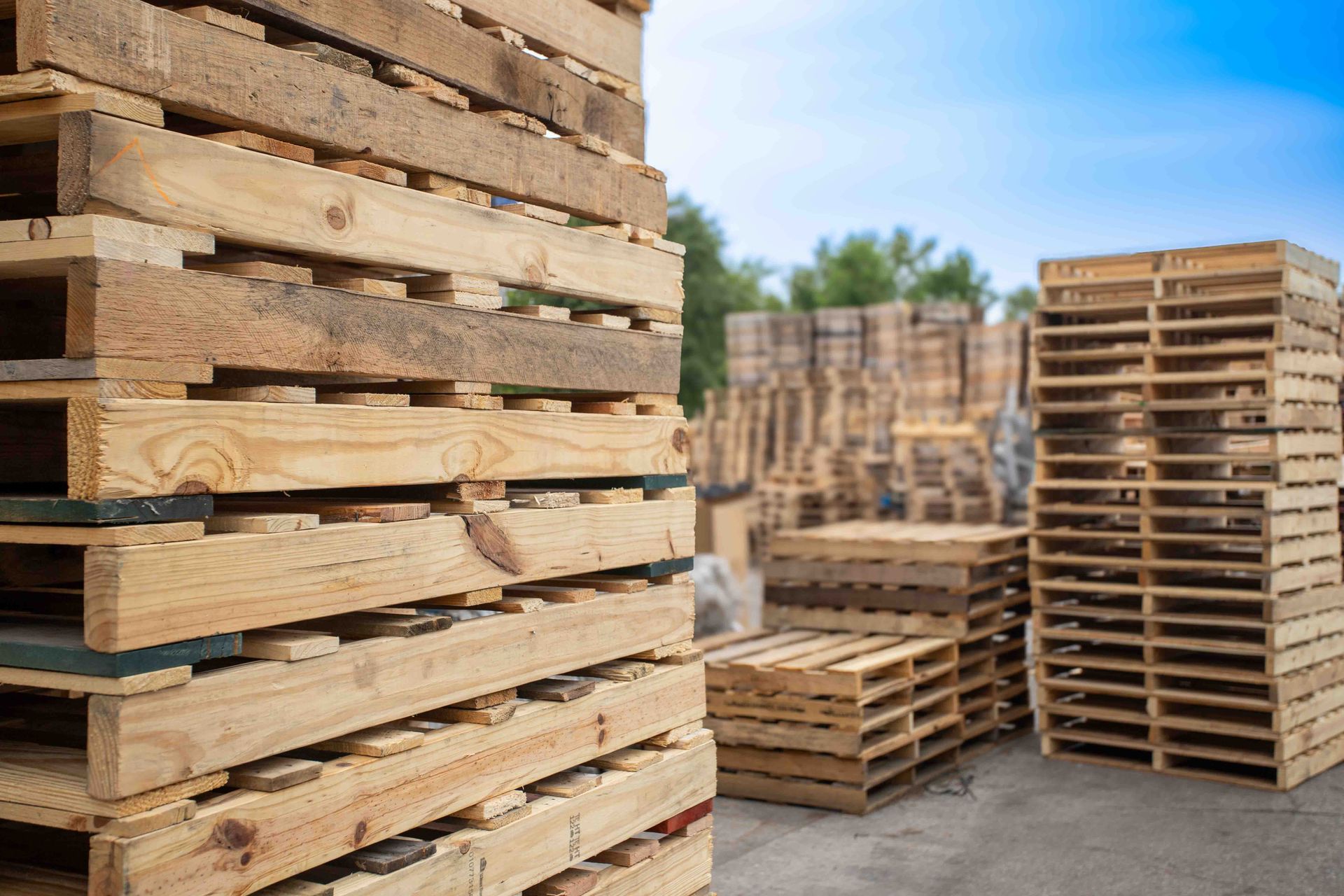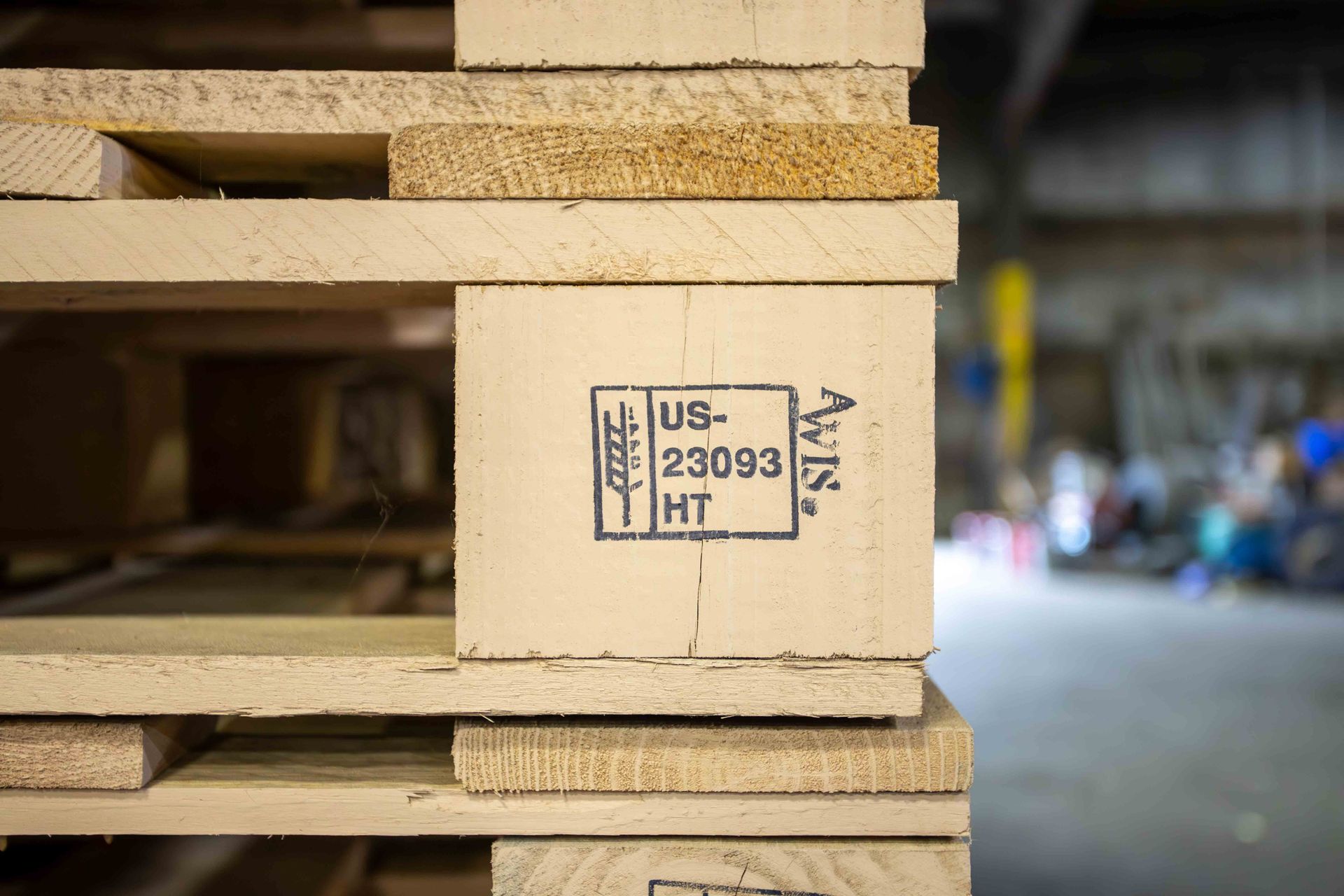Warehouse Training & Best Practices for Pallet Handling
Safety is always the top priority in a busy warehouse environment. Workers constantly move heavy loads, navigate tight spaces, and use pallet jacks, forklifts, and lifts.
Accidents can happen quickly without proper training and safety practices, leading to injuries, product damage, and costly downtime.
Pallet safety is central to keeping operations efficient and workers protected for companies that rely on pallets to store and transport goods.
Let's cover essential training tips and safety practices for handling pallets, pallet jacks, skyjacks (scissor lifts), and forklifts, as well as building an overall safety-first culture in the warehouse.
The Foundation – General Pallet Safety
Before focusing on equipment, it is crucial to start with the pallets themselves. Even the best-trained employees can encounter problems working with damaged or unsafe pallets.
- Inspect Pallets Before Use: Workers should always check for cracks, splinters, or protruding nails before loading. Damaged pallets can collapse under pressure, leading to dropped loads or injuries.
- Practice Safe Stacking: Pallets should never be stacked higher than recommended, and stacks should remain even and stable. A leaning or top-heavy pallet stack is a serious hazard.
- Distribute Weight Properly: Overloading a pallet or stacking items unevenly can create instability. Training employees to center and balance loads keeps materials secure and makes it easier to move safely.
Simple steps like these reduce risks before equipment even comes into play.
Pallet Jack Safety
Pallet jacks (manual and electric) are among the most commonly used pieces of warehouse equipment. While they may seem straightforward, improper use can cause injuries or product damage.
- Understand Limits: Every pallet jack has a weight capacity. Employees should never exceed these limits.
- Push, Don't Pull: When possible, workers should push the load instead of pulling it. Pushing provides better control and reduces strain on the body.
- Maintain Visibility: Operators should always keep their line of sight clear. Moving blind, even with a light load, is a recipe for accidents.
- Stay Aware of Your Surroundings: Pallet jacks are often used in high-traffic areas. Workers should slow down at intersections, yield to pedestrians, and avoid blocking aisles.
Proper training ensures that pallet jacks remain efficient tools rather than safety risks.

Skyjack (Scissor Lift) Safety
Skyjacks, also known as scissor lifts, are essential for reaching higher shelves or performing overhead tasks. Because they lift employees off the ground, strict safety practices are required.
- Pre-Use Checks Are Critical: Operators should inspect controls and guardrails and confirm that the floor surface can handle the lift's weight.
- Certification Matters: Only properly trained and authorized workers should operate scissor lifts. Harnesses and guardrails should always be used for fall protection.
- Operate With Caution: Lifts should never be overloaded, and operators should avoid sudden movements or driving while elevated. Stability is key when working at heights.
Skyjacks allow safe, efficient access to high warehouse areas with the proper precautions.
Forklift Safety
Forklifts are among a warehouse's most powerful and valuable tools, but they can also be one of the most dangerous if mishandled. Because of their size and power, OSHA requires forklift operators to be trained and certified.
- Pre-Operation Inspections: Before starting, workers should check tires, forks, hydraulics, and safety signals.
- Safe Operating Practices: Loads should always be kept low to the ground for stability. Operators must drive at safe speeds, slow down around corners, and use horns at blind spots. Passengers should never ride along.
- Pedestrian Safety: Warehouses should have designated walkways for pedestrians. Operators and workers on foot should make eye contact and use hand signals to avoid misunderstandings.
Well-trained forklift operators not only reduce accidents but also help protect valuable inventory.

Training and Safety Culture
Safety training isn't a one-time event. Warehouses that maintain high safety standards treat training as an ongoing investment.
- Offer Refresher Courses: Even experienced employees benefit from reminders about proper procedures and updated regulations.
- Mentorship for New Hires: Pairing new workers with seasoned employees helps reinforce safe habits from the start.
- Clear Signage and Communication: Marked lanes, hazard warnings, and posted load limits keep safety visible at all times.
- Encourage Reporting: Workers should feel comfortable reporting unsafe pallets, broken equipment, or unsafe practices without fear of blame.
Creating a safety-first culture goes beyond training: it builds teamwork and accountability across the warehouse.
Connect With Global ICB
By investing in safety, warehouses protect workers, prevent costly accidents, and ensure smooth operations. Whether inspecting a pallet, checking equipment before use, or offering regular training sessions, small steps add significant results.
A strong safety culture is one of the best ways to keep warehouses productive, efficient, and, most importantly, safe for everyone.
At Global ICB, we have over
35 years of experience selling, servicing, and recycling pallets of all materials, grades, and conditions. With competitive pricing, custom designs, and nationwide delivery, we can ensure that your pallet needs are met, optimized, and exceeded.
Contact us today for all your pallet needs!




